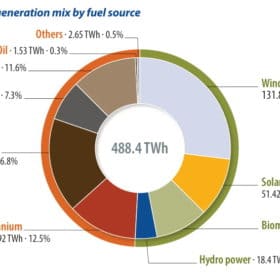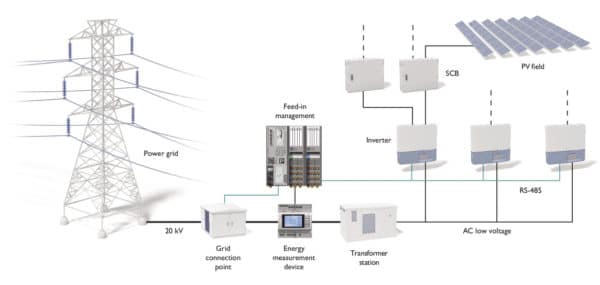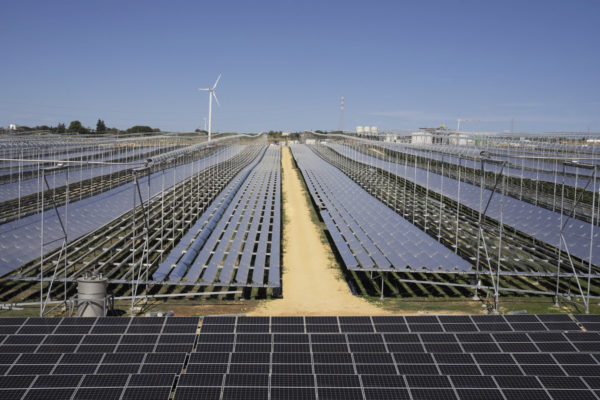The weekend read: PV feed in, certified

As more renewable energy capacity is built, commissioned, and connected, grid stability concerns are driving rapid regulatory changes. In the European Union, regulatory changes are now building momentum. As the first mover, Germany has shown that achieving compliance can initially seem burdensome, but it can quickly be integrated into existing processes and platforms.
From pv magazine 04/2020
PV assets being developed on European grids are increasingly facing new conditions placed on them in the pursuit of maintaining grid stability. In the past, solar arrays had feed-in management requirements decided by local grid operators through compliance testing.
The industry is now increasingly seeing the benefits of compliance via certification. Led by European regulators, the wider aim is a sustainable, affordable, and secure grid supply – but the steps to get there have not been without controversy.
Germany first
In the European Union, EU Regulation 2016/631, informally known as the Network Code on Requirements for Generators (RfG), set out in 2016 to guide new grid-connected energy generation and storage systems. Each member country follows the RfG to enforce grid code compliance rules with their own differences, and along different timeframes.
In Germany, rules related to RfG have been in force, with a grandfathering period, since April 27, 2019. This made the country both the EU’s first mover and the first country in the world to require elements such as certified reactive power control on new solar installations. Yet Germany went beyond RfG guidelines, regulating smaller generators.
“In Germany, one reason for stricter requirements is the high penetration of intermittent generation sources,” says Ehsan Khan, grid code compliance Engineer at Meteocontrol. Figures from Fraunhofer ISE’s Energy Charts show that 50.9% of the German electricity mix in 2020 was covered by renewables, including wind at 27% and solar at 10.5%.
“The ‘Energiewende’ or ongoing ‘energy transition’ plans by Germany, are aggressive in moving to renewables quickly,” says Khan. “Strict and controllable requirements are therefore understandable, even if Germany is much more restrictive than other countries.”
EU movers
Other EU countries with significant renewables feed-in, including the likes of Spain, the Netherlands, Poland, and Portugal, have been next in line to implement the regulations into laws.
In Spain, the consolidated Real Decreto 647/2020 (Royal Decree) implemented new RfG-based criteria for generators on July 7, 2020, with a transition period in place following an Orden Ministerial (Ministerial Order). In Poland, a technical guideline was published on March 20, 2020, with a final version still to come.
However, a joint framework between European grid codes is still lacking, and uncertainty around the application of the final grid codes and national compliance verification procedures remains problematic.

Image: Phoenix Contact
The aim, however, remains the same: The RfG intends to provide grid support from more avenues. As renewable energy feed-ins increase, this provides grid operators more tools to maintain grid stability. To that end, larger PV arrays may need to supply reactive power, offer dynamic grid support during short-term voltage spikes or drops, and more. Even at night, solar parks with compliant feed-in management can provide reactive power to the grid via capacitive loads, the so-called “Q at night” feature.
Maximum power
The RfG sets out rules depending on the maximum capacity of generation, voltage level of connection, and location of installation. There are four so-called Types: A, B, C and D. Each installation is classified by its power ratings: Type A is classified as a minor installation, with minimal requirements, larger Type D installations have significant requirements.
As shown in the table (bottom right), Type A generators can supply up to 1 MW in Continental Europe, 1.5 MW in the Nordic areas, but only 0.1 MW in Ireland and Northern Ireland. Beyond those levels, generators then become Type B, requiring certified feed-in management, with Types C and D more rigorous.
However, Germany’s own implementation, via new application rules VDE-AR-N 4110 and VDE-AR-N 4120, has much more aggressive limitations. For PV generators, certified feed-in management controllers are strictly required from an installation size starting at above 135 kW, versus RfG guidelines setting a 1 MW threshold.
Feed-in management
The process of requiring certified control units (known as power plant controllers, or PPCs) at larg(er)-scale solar installations has gone through a skeptical transition period, but concerns have mostly subsided. In 2019, pv magazine published a special report and survey of concerned EPCs working in Germany over unknown additional costs and requirements.
However, now that the laws have been in place for two years, it is acknowledged that costs for purchasing certified PPCs have increased, although inverters may be cheaper with energy management shifting to the controllers. And it seems that the standardized approach and proven function have resulted in what some in the industry are calling a better overall outcome.
Industry feedback
Richard Morris, CEO of Zebotec, an independent system integrator, describes some initial reluctance around the process of controller certification. “I was very skeptical of the certification process of the controller,” says Morris. “Previously, I would have said, ‘I’m responsible for making it work, and I’ll make it work.’ But through the process now, I do see advantages. The controller is now certified, meaning I don’t have to worry about the internals. It’s a minor cost increase, but it should be the same across sites in other EU countries in time.
“And the requirements make sense,” Morris continues. “More projects are confirming it is for the greater good. We’ve done 300 projects or more in the last 15 years, and we’ve seen other projects that may not have complied with regulations but are connected nonetheless. There were ways to build projects that didn’t strictly comply. So, having procedures regulated simplifies the approach, it’s a repeatable standard that we are supplying, even if the cost to us is €1,000 to €2,000 more.”
Those costs cover suppliers which had to certify their controllers. Phoenix Contact, which supplies controllers for power generation systems, chose Moeller Operating Engineering, and that meant approximately €100,000 in costs across internal engineering and certification.
Torsten Sieker, director of global industry management solar power at Phoenix Contact, also confirms a change in view. “My first reflex to the new regulations was, that’s bad. It sounded like lobbying from the big utility and grid providers to enforce a new barrier for renewable generators,” said Sieker, “with much of what is certified in the power control unit already in place.”
“But after two years, I have changed my mind. There is more standardization. Previously, regulations were not transparent, and connections were done via an appointment with a grid operator, who checked, underlined and released based on their interpretation. Now, with certification, we have transparent and sophisticated documentation.”
“The other side is that every five years, or any change to our technology, requires new certifications at our expense. And we still face some problems with local grid operator certification requirements. Phoenix is seeking overall guidelines to remove additional local certifications.”
What’s next?
Sieker explains that a possible next step, although difficult, is for a single certification in the EU. Additional certifications for each country are currently required, at a cost of around one-third of the existing certification for Germany. “An update to the EU’s RfG regulations may mean one set of certifications across all countries, but it is still two to three years away,” says Sieker. Meteocontrol’s Ehsan Khan agrees that keeping up with certification requirements is challenging.
“Even as a proven PPC manufacturer with a portfolio of major projects, it is a challenge to get certification in each and every country. The requirements are changing fast, and the requirements are not always easy, which of course benefits grid operators.
“That means we are aggressively planning for the future, with our R&D team working on areas such as frequency control, reactive control, and voltage control. In the end, we understand this is necessary.”
Tristan Rayner
| RfG implements thresholds by region, based on maximum capacity | |||
| Synchronous Area | Upper threshold limit (MW) | ||
| A/B | B/C | C/D | |
| Continental Europe | 1 MW | 50 MW | 75 MW |
| Great Britain | 1 MW | 50 MW | 75MW |
| Nordic | 1.5 MW | 10 MW | 30 MW |
| Ireland and Northern Ireland | 0.1 MW | 5 MW | 10 MW |
| Baltic | 0.5 MW | 10 MW | 15 MW |

Image: meteocontrol

